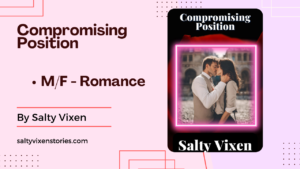You are writing an eBook for Amazon KDP (or any place) and you need help with other words you could use instead of “Said” - we have a good list. Remember, effective, compelling dialogue has multiple elements. It’s not only what characters say but how they say it that matters. Or how you show who’s speaking. ‘He said’ and ‘she said’ can dull and grow boring if overused. Read other words for said as well as tips for keeping your dialogue natural and engrossing:
First, what is a ‘dialogue tag’?
Tags (like name tags) identify. A dialogue tag is group of words following quoted speech (e.g. ‘she said’), identifying who spoke and/or how they spoke. Other words for ‘said’ can indicate:
- Volume (e.g. yelled, shouted, bellowed, screamed, whispered)
- Tone or pitch (e.g. shrieked, groaned, squeaked)
- Emotion (e.g. grumbled, snapped, sneered, begged)
The relation between these elements of voice are also important. It would be strange, for example, for a character to ‘sneer’ the words ‘I love you’, since the word ‘sneer’ connotes contempt which is contrary to love.
Given that there are countless verbs that can take the place of ‘said,’ should you simply find a stronger, more emotive one and use that?
Not always. Here are some tips for using dialogue tags such as said and its substitutes well:
1. Use all dialogue tags sparingly
The problem with dialogue tags is they draw attention to the author’s hand. The more we read ‘he said’ and ‘she said’, the more we’re aware of the author creating the dialogue. We see the author attributing who said what – it lays their guiding hand bare. Compare these two versions of the same conversation:
“I told you already,” I said, glaring.
“Well I wasn’t listening, was I!” he said.
“Apparently not,” he replied.
Now compare this to the following:
I glared at him. “I told you already.”
“Well I wasn’t listening, was I!”
“Apparently not.”
For some, it’s a matter of stylistic preference. Even so, it’s hard to argue that the first version is better than the second. In the second, making glaring an action rather than tethering it to the dialogue gives us a stronger sense of the characters as acting, fully embodied beings.
Because it’s clear the glaring first-person ‘I’ is the character speaking at first, we don’t need to add ‘I said’. The strength of the exclamation mark in the second character’s reply makes any dialogue tag showing emotion (e.g. ‘he snapped’) unnecessary. Because it’s on a new line, and responds to what the other said, we know it’s a reply from context.
Similarly, in the first speaker’s retort, we don’t need a tag telling us his tone (that it’s curt, sarcastic, or hostile). The brevity, the fact it’s only two words, conveys his tone and we can infer the character is still mad.
Using tags sparingly allows your reader the pleasure of inferring and imagining. The reader gets to fill in the blank spaces, prompted more subtly by the clues you leave (an exclamation mark or a pointed, cross phrase).
2. Use ‘said’ sparingly, other words for said more so
The word ‘said’, like ‘asked’, gives no colour and personality to a character’s utterance. In conversation between characters, alternatives for said can tell the reader:
- The individual emotional or mental states of the conversants
- The degree of conflict or ease in the conversation
- What the relationship is like between characters (for example, if one character always snaps at the other this will show that the character is dominanting and perhaps unkind towards the other)
Here are dialogue words you can use instead of ‘said’, categorised by the kind of emotion or scenario they convey:
Anger:
Shouted, bellowed, yelled, snapped, cautioned, rebuked.
Affection:
Consoled, comforted, reassured, admired, soothed.
Excitement:
Shouted, yelled, babbled, gushed, exclaimed.
Fear:
Whispered, stuttered, stammered, gasped, urged, hissed, babbled, blurted.
Determination:
Declared, insisted, maintained, commanded.
Happiness:
Sighed, murmured, gushed, laughed.
Sadness:
Cried, mumbled, sobbed, sighed, lamented.
Conflict:
Jabbed, sneered, rebuked, hissed, scolded, demanded, threatened, insinuated, spat, glowered.
Making up:
Apologized, relented, agreed, reassured, placated, agreed, assented.
Amusement
Teased, joked, laughed, chuckled, chortled, sniggered, tittered, guffawed, giggled, roared.
Storytelling:
Related, recounted, continued, emphasized, remembered, recalled, resumed, concluded.
Despite there being many other words for said, remember:
- Too many can make your dialogue start to feel like a compendium of emotive speech-verbs. Use colorful dialogue tags for emphasis. They’re the salt and spice in dialogue, not the whole meal
- Use emotive dialogue tags for emphasis. For example if everything has been placid and a character suddenly gets a fright, here would be a good place for a shriek or a scream
3. Show emotion in dialogue through action and gesture
One problem we often see in beginners’ dialogue is that all the emotion is crammed into the words themselves and the dialogue tags. Yet the characters feel a little like talking heads in jars. Your characters have bodies, so don’t be afraid to use them. Compare these examples:
“That’s not what you said yesterday,” she said, her voice implying she was retreating, withdrawing.
“Well I hadn’t thought about it yet. The truth is now that I’ve had time I see that maybe it’s not going to work out. But let’s not be hasty,” he said, clearly wanting to control her retreat, too.
Now compare:
“That’s not what you said yesterday.” She hesitated, turned and walked to the window.
“Well I hadn’t thought about it yet.” He stepped closer. “The truth is now that’ I’ve had time I see that maybe it’s not going to work out. But let’s not be hasty.” He reached out to place a hand on the small of her back.
In the second example, the dialogue is interspersed with setting. How the characters engage with the setting (the woman turning to face the window, for example) reveals their emotions mid-dialogue. The movement and gesture conveys similar feelings to the first dialogue example. Yet there’s a clearer sense of proximity and distance, of two characters dancing around each other’s words, thoughts and feelings.
Vary the way you show who’s speaking in your dialogue. Use emotive other words for said to season characters’ conversations. Yet seasoning shouldn’t overpower substance. Use the content of what characters say, their movement, body language, pauses, and silences, to create deeper, more layered exchanges.




















